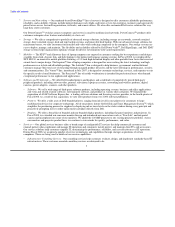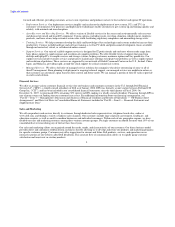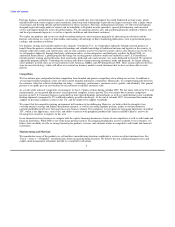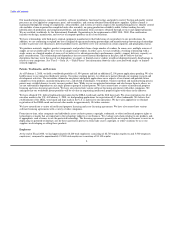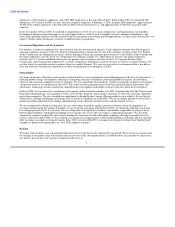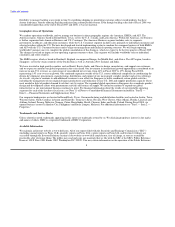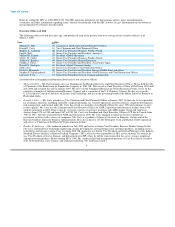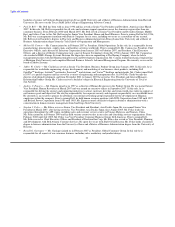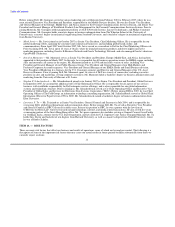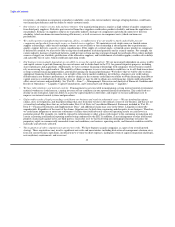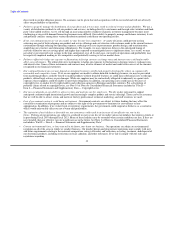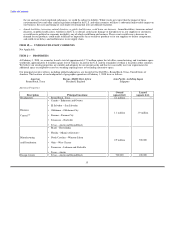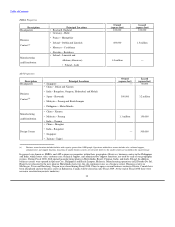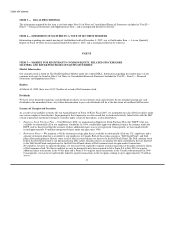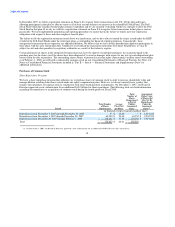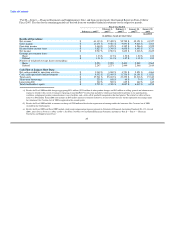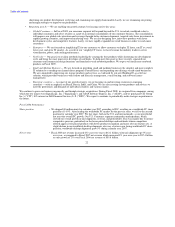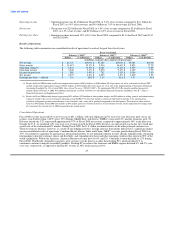Dell 2007 Annual Report Download - page 17
Download and view the complete annual report
Please find page 17 of the 2007 Dell annual report below. You can navigate through the pages in the report by either clicking on the pages listed below, or by using the keyword search tool below to find specific information within the annual report.
Table of Contents
inventories, a disruption in component or product availability, such as the current industry shortage of laptop batteries, could harm
our financial performance and our ability to satisfy customer needs.
• Our reliance on vendors creates risks and uncertainties. Our manufacturing process requires a high volume of quality components
from third-party suppliers. Defective parts received from these suppliers could reduce product reliability and harm the reputation of
our products. Reliance on suppliers subjects us to possible industry shortages of components and reduced control over delivery
schedules (which can harm our manufacturing efficiencies), as well as increases in component costs (which can harm our
profitability).
• We could experience manufacturing interruptions, delays, or inefficiencies if we are unable to timely and reliably procure
components and products from single-source or limited-source suppliers. We maintain several single-source or limited-source
supplier relationships, either because multiple sources are not available or the relationship is advantageous due to performance,
quality, support, delivery, capacity, or price considerations. If the supply of a critical single- or limited-source product or component
is delayed or curtailed, we may not be able to ship the related product in desired quantities and in a timely manner. For example, the
current industry shortage of notebook batteries could prevent us from meeting customer demand for notebooks. Even where multiple
sources of supply are available, qualification of the alternative suppliers, and establishment of reliable supplies, could result in delays
and a possible loss of sales, which could harm operating results.
• Our business is increasingly dependent on our ability to access the capital markets. We are increasingly dependent on access to debt
and capital sources to provide financing for our customers and to obtain funds in the U.S. for general corporate purposes, including
share repurchases and acquisitions. Additionally, we have customer financing relationships with companies whose business models
rely on accessing the capital markets. The inability of these companies to access such markets could force us to self-fund transactions
or forgo customer financing opportunities, potentially harming our financial performance. We believe that we will be able to obtain
appropriate financing from third parties even in light of the current market conditions; nevertheless, changes in our credit ratings,
deterioration in our business performance, or adverse changes in the economy could limit our ability to obtain financing from debt or
capital sources or could adversely affect the terms on which we may be able to obtain any such financing, which could unfavorably
affect our net revenue and profitability. See "Part II — Item 7 — Management's Discussion and Analysis of Financial Condition and
Results of Operations — Liquidity, Capital Commitments, and Contractual Cash Obligations — Liquidity."
• We face risks relating to our internal controls. If management is not successful in maintaining a strong internal control environment,
material weaknesses could reoccur, causing investors to lose confidence in our reported financial information. This could lead to a
decline in our stock price, limit our ability to access the capital markets in the future, and require us to incur additional costs to
improve our internal control systems and procedures.
• Unfavorable results of legal proceedings could harm our business and result in substantial costs — We are involved in various
claims, suits, investigations, and legal proceedings that arise from time to time in the ordinary course of our business and that are not
yet resolved, including those that are set forth under Note 10 of Notes to Consolidated Financial Statements included in "Part II —
Item 8 — Financial Statements and Supplementary Data," and additional claims may arise in the future. Litigation is inherently
unpredictable. Regardless of the merit of the claims, litigation may be both time-consuming and disruptive to our business. Therefore,
we could incur judgments or enter into settlements of claims that could adversely affect our operating results or cash flows in a
particular period. For example, we could be exposed to enforcement or other actions with respect to the continuing investigation into
certain accounting and financial reporting matters being conducted by the SEC. In addition, if any infringement or other intellectual
property claim made against us by any third party is successful, or if we fail to develop non-infringing technology or license the
proprietary rights on commercially reasonable terms and conditions, our business, operating results, and financial condition could be
materially and adversely affected.
• The acquisition of other companies may present new risks. We have begun to acquire companies as a part of our overall growth
strategy. These acquisitions may involve significant new risks and uncertainties, including distraction of management attention away
from our current business operations, insufficient new revenue to offset expenses, inadequate return of capital, integration challenges,
new regulatory requirements, and issues not
13


